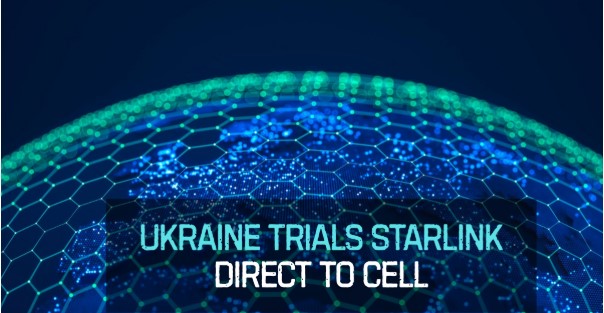technology in the Zhytomyr region. It demonstrated successful text message exchanges between Kyivstar’s CEO and the country’s Digital Transformation Minister using ordinary smartphones—no adapters, no special apps. This is the first such test in Europe and shows how satellites can replace damaged or missing cellular infrastructure. So, now let us see Starlink Direct-to-Cell Test in Ukraine along with Accurate LTE RF drive test tools in telecom & RF drive test software in telecom and Accurate Indoor cellular coverage walk testing tool in detail.
Why This Matters Technically
Direct-to-cell means satellites act like cell towers in space. These orbiting base stations beam cellular signals directly into smartphones using built-in cellular radios. That enables normal devices to connect, even when ground networks are destroyed or offline. This setup may transform coverage in conflict zones, remote areas, or disaster sites.
Performance Observations from the Test
Initial testing covered about 200 square kilometers. These levels match early 3G performance, sufficient for SMS and messaging apps like WhatsApp or Signal.
No formal metrics for latency or packet loss were shared, but the test showed that live messaging over space can maintain functional performance—even under infrastructure failure conditions.
Infrastructure Details
These carry integrated cellular modems and directional beamforming antennas to send signals directly to user devices. This setup bypasses the need for ground-based towers—which is critical when they’re offline or destroyed.
The direct-to-cell configuration is compatible with 4G smartphones. No hardware upgrades or SIM changes are required; the signaling process operates over existing cellular protocols.
Use Case: Ukraine’s Resilience Needs
Ukraine’s telecom infrastructure faces constant disruption due to ongoing conflict and attacks. Traditional cell towers and fiber lines suffer frequent damage, causing mass outages. Direct-to-cell can maintain connectivity during power cuts, making it critical for emergency response, coordination, and civilian communication during crises.
Kyivstar also reported that its network can now function for up to 10 hours during blackouts—an improvement from earlier years when outages were much longer. The Starlink test adds another layer of resilience.
Industry Context
Satellite-to-phone connectivity is currently tested by several operators worldwide—T-Mobile in the US, Vodafone in the UK, and others. Starlink, along with initiatives like AST SpaceMobile and Project Kuiper, are leading this wave. Lithuania, Australia, and New Zealand have ongoing or planned deployments.
Tests typically show lower speeds and reliability compared to terrestrial networks. Challenges include line-of-sight limitations (e.g., buildings, terrain) and limited spectrum availability. Still, it fills coverage gaps in ways ground infrastructure cannot.
Pilot to Scale: The Road Ahead
- Messaging Services: This first phase focuses on text-based apps. Launch is expected by the end of 2025.
- Broadband and Voice: By mid-2026, plans call for mobile satellite internet and voice capabilities.
This shift signals Ukraine’s intent to lead in satellite-based cellular access within Europe.
Future Considerations
- Spectrum Management: Using frequencies that are typically assigned to terrestrial networks brings regulatory complexity. Satellites either share existing bands or need new allocations.
- Throughput Improvements: Current speeds match early 3G, but theory suggests with more satellites and better spectrum, rates of 4 to 24 Mbps are achievable in the future. arXiv
- Deployment Costs: Backhaul, ground stations, satellite manufacturing, and licensing costs remain high. Connectivity may not be affordable in all cases—but value increases in hardship or emergency conditions.
- Environmental & Safety Considerations: LEO satellite constellations require collision avoidance, station-keeping thrusters, and responsible de-orbiting to reduce space debris.
About RantCell
RantCell delivers a software-based approach to mobile network testing, eliminating the dependency on expensive and complex test equipment. Deployed on standard Android smartphones, it supports advanced features such as real-time QoE measurement, RF parameter logging, network benchmarking, and automated reporting for both private and public networks.
Whether evaluating coverage, troubleshooting network issues, or validating SLAs, RantCell provides the insights needed to optimize 4G and 5G performance. Tests can be executed remotely, with data instantly uploaded to the cloud for analysis. Also read similar articles from here.

